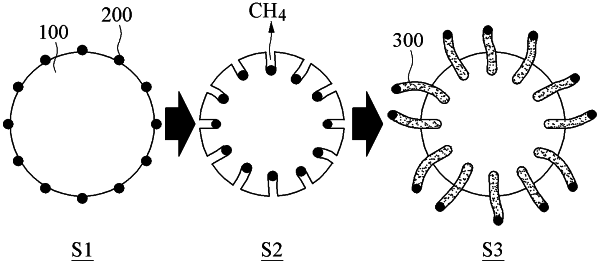| CPC H01B 1/04 (2013.01) [B01J 23/75 (2013.01); B01J 37/0201 (2013.01); B01J 37/08 (2013.01); B82Y 30/00 (2013.01); B82Y 40/00 (2013.01); C01B 32/15 (2017.08); H01M 4/13 (2013.01); H01M 4/364 (2013.01); H01M 4/583 (2013.01); H01M 4/62 (2013.01); H01M 10/0525 (2013.01); C01P 2004/32 (2013.01); C01P 2004/64 (2013.01); C01P 2006/11 (2013.01); C01P 2006/40 (2013.01)] | 6 Claims |

|
1. A method for producing a composite conductive material, comprising:
(S1) supporting catalyst particles on surfaces of spherical carbon particles;
(S2) heat treating the catalyst particles in a helium or hydrogen atmosphere such that the catalyst particles penetrate the surfaces of the spherical carbon particles and are impregnated beneath the surfaces of the spherical carbon particles at a contact point between the spherical carbon particles and the impregnated catalyst particles;
(S3) heating the spherical carbon particles having the impregnated catalyst particles in the presence of a source gas to grow carbon nanofibers from the impregnated catalyst particles to form the composite conductive material, wherein the source gas contains a carbon source, and wherein the carbon nanofibers extend from the contact point to above the surfaces of the spherical carbon particles, and
oxidizing the spherical carbon particles prior to supporting the catalyst particles on the spherical carbon particles in step (S1).
|